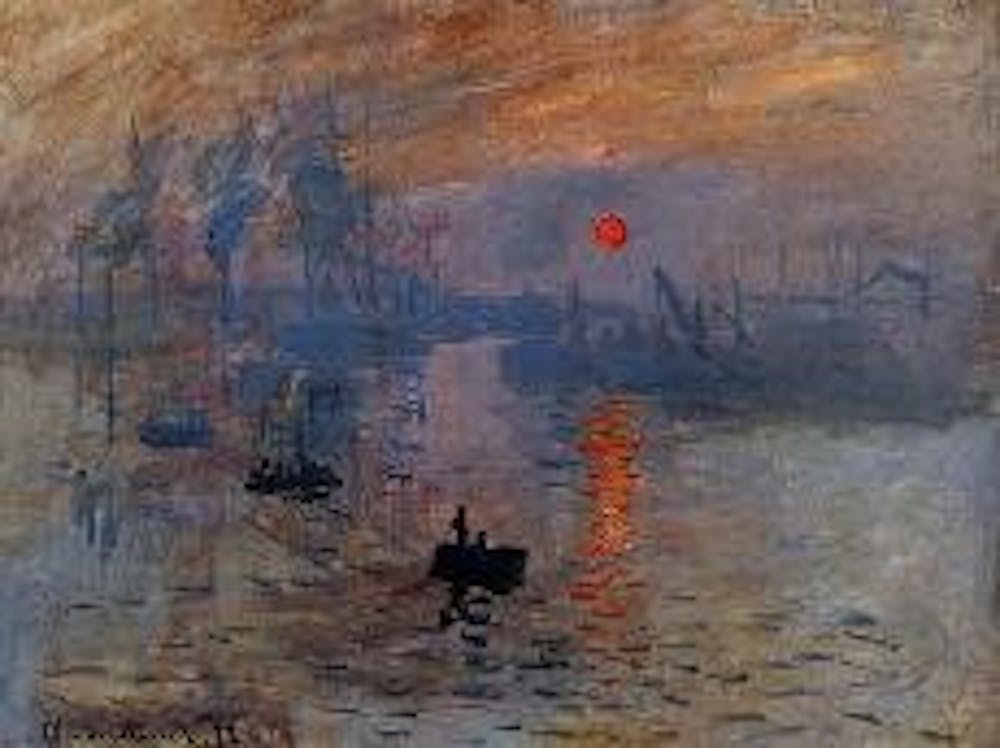From Degas' poised dancers to Monet's prismatic water lilies, Impressionism is one of the most pervasive and widely enjoyed art forms. Its vivid-color and evocative imagery allows impressionism to be immediately appreciated and enjoyed. However, understanding the questions that drove the movement places the paintings in a more complex frame than their ubiquitousness suggests.
Impressionism took hold in France between 1860 and 1900. While regional varieties, such as American Impressionism, eventually flourished, the movement's roots are distinctly French. The movement's name is derived from a painting by the father of Impressionism, Claude Monet. According to the Oxford Dictionary of Art, "Impression, Sunrise," painted in 1873, meditates on the dynamism of light, and gives a visual context for the vivid, natural world that Impressionist artists create.
Other famous Impressionists include Paul Cézanne, Edgar Degas, Édouard Manet and Auguste Renoir. Mary Cassatt, with her paintings of pink-cheeked children, is one of the most renowned U.S. impressionists, according to the Oxford Dictionary of Art.
With its images adorning everything from picture post cards to dentist offices, Impressionism today is often dismissed as one of the most conventional of art forms. At the time it captivated France, however, the movement was revolutionary.
Impressionism emerged from a history of French landscapes and Realism, painting styles that demanded precision. Contrastingly, Impressionist paintings are non-narrative in nature and don't rely on traditional techniques of perspective. They depict dynamic scenes of nature or of bourgeois recreation. The paintings seem unfinished and hastily painted , suggesting, fittingly, the impression of a scene rather than an exact replication, according to the Oxford Dictionary of Art.
Accordingly, Impressionism flirts with the senses. Light and vibrant color reveal the fleeting sense of the scene. Pink melting in the morning sky, deep yellow flashing in the night, pale blue easing into afternoon: the color and richness of the light establishes the time of day and the season, but also the painting's emotional tone. Impressionist artists use light to sketch a hazy outline of emotion.
With visceral brush strokes, Impressionist paintings are also incredibly tactile. Their texture enhances their organic and alive nature. New details seem to emerge in an impressionist painting with each viewing.
Monet's obsession with his garden and pond at his house in Giverny, France produced some of the most famous images of the Impressionist movement. His garden became his outdoor studio.
In "The Japanese Footbridge," Monet meditates on the surface of the pond outside his house and explores the effect of light on the reflection of the water lilies. Unusual for an Impressionist painting, the sky can hardly be seen. But Monet paints the pond as he painted the sky, with astute attention to the prism, color and fragmentation of light, according to the National Gallery of Art Web site.
The NGA, at Seventh Street and Constitution Avenue on the National Mall, has an extensive and beautiful collection of Impressionist paintings, with works from Monet, Degas and Cassatt, among many others. You can also browse images from their Impressionist collection on their Web site at www.nga.gov. Regardless, treat yourself to a cappuccino and a pain au chocolat and enjoy the light.





